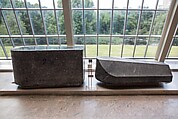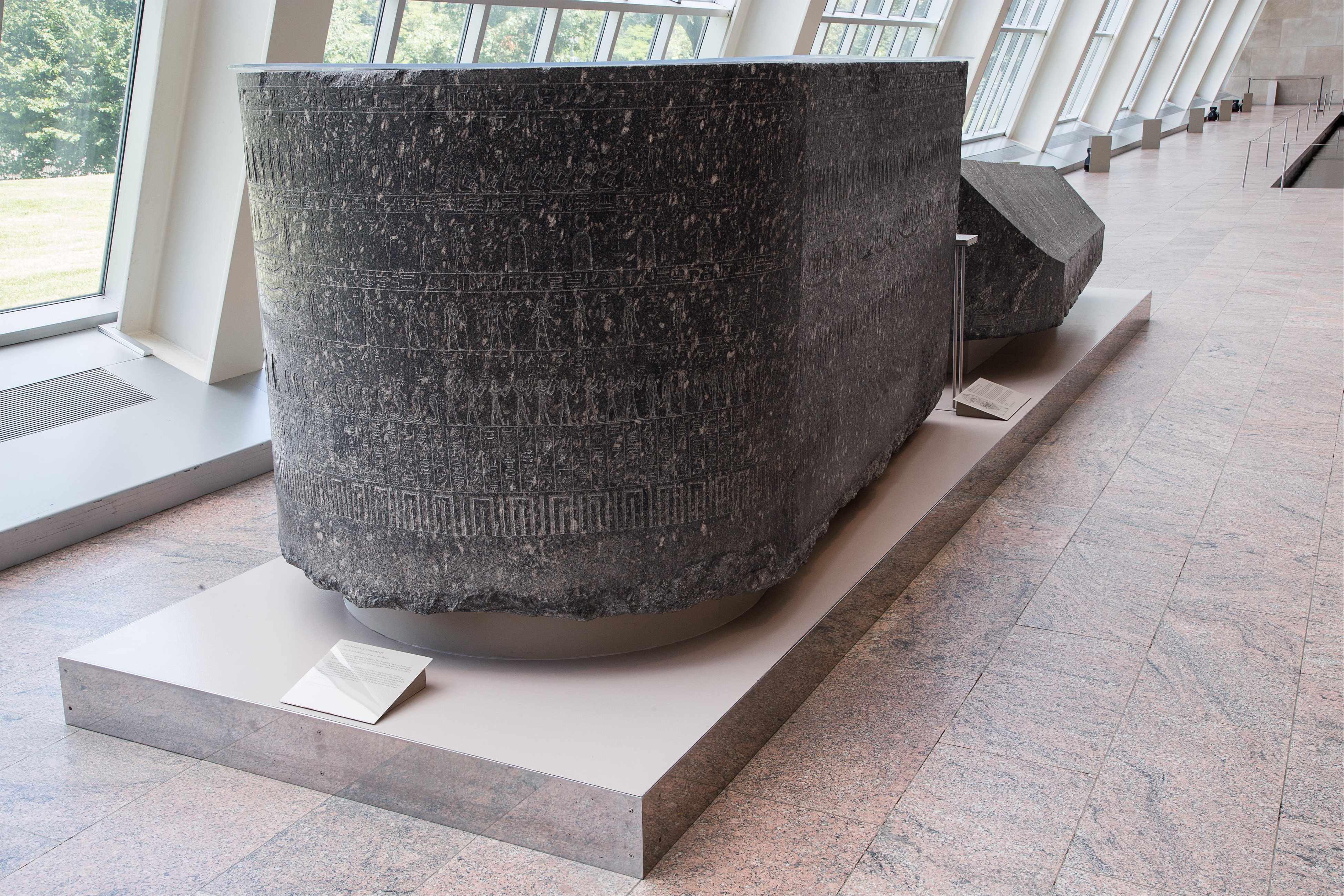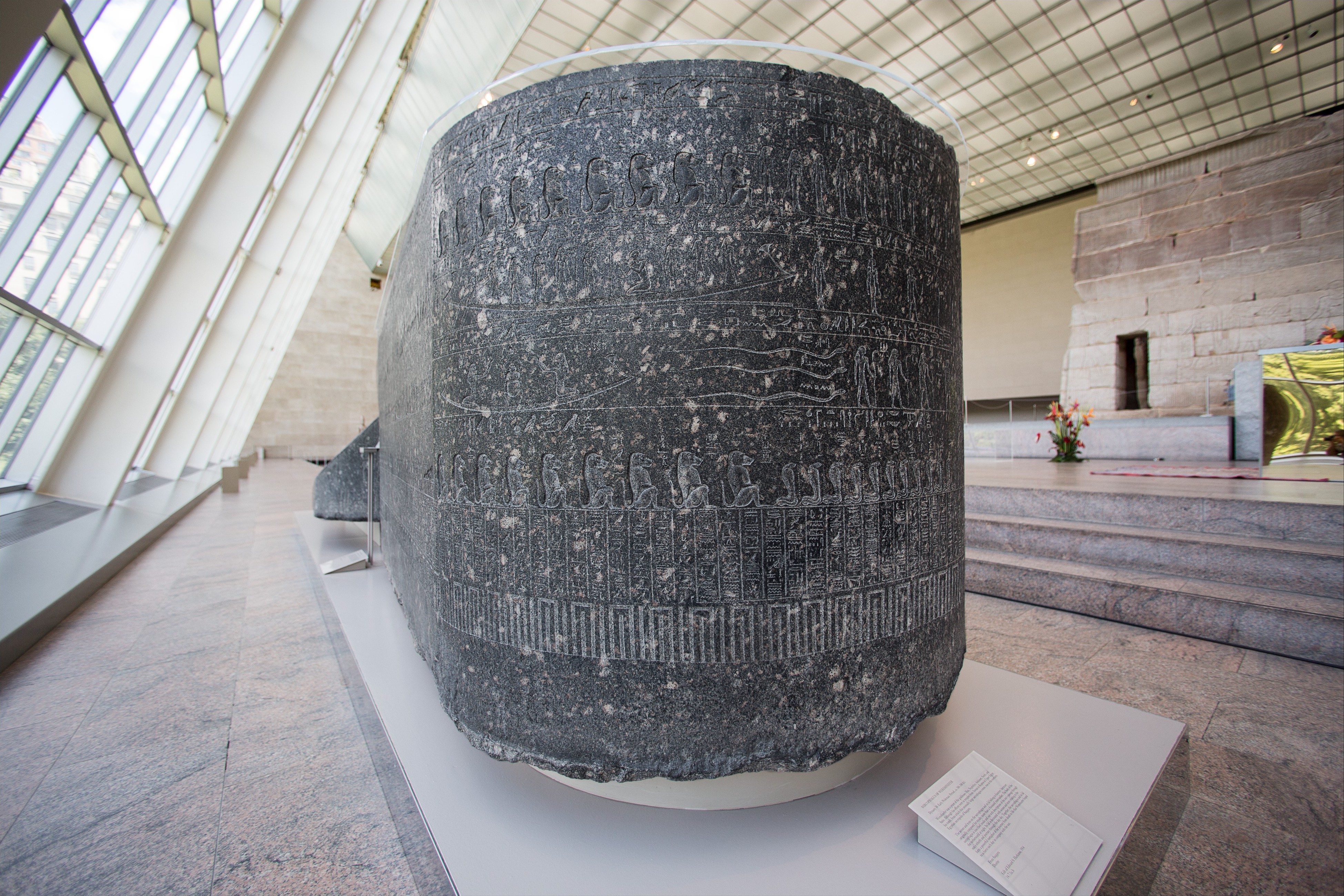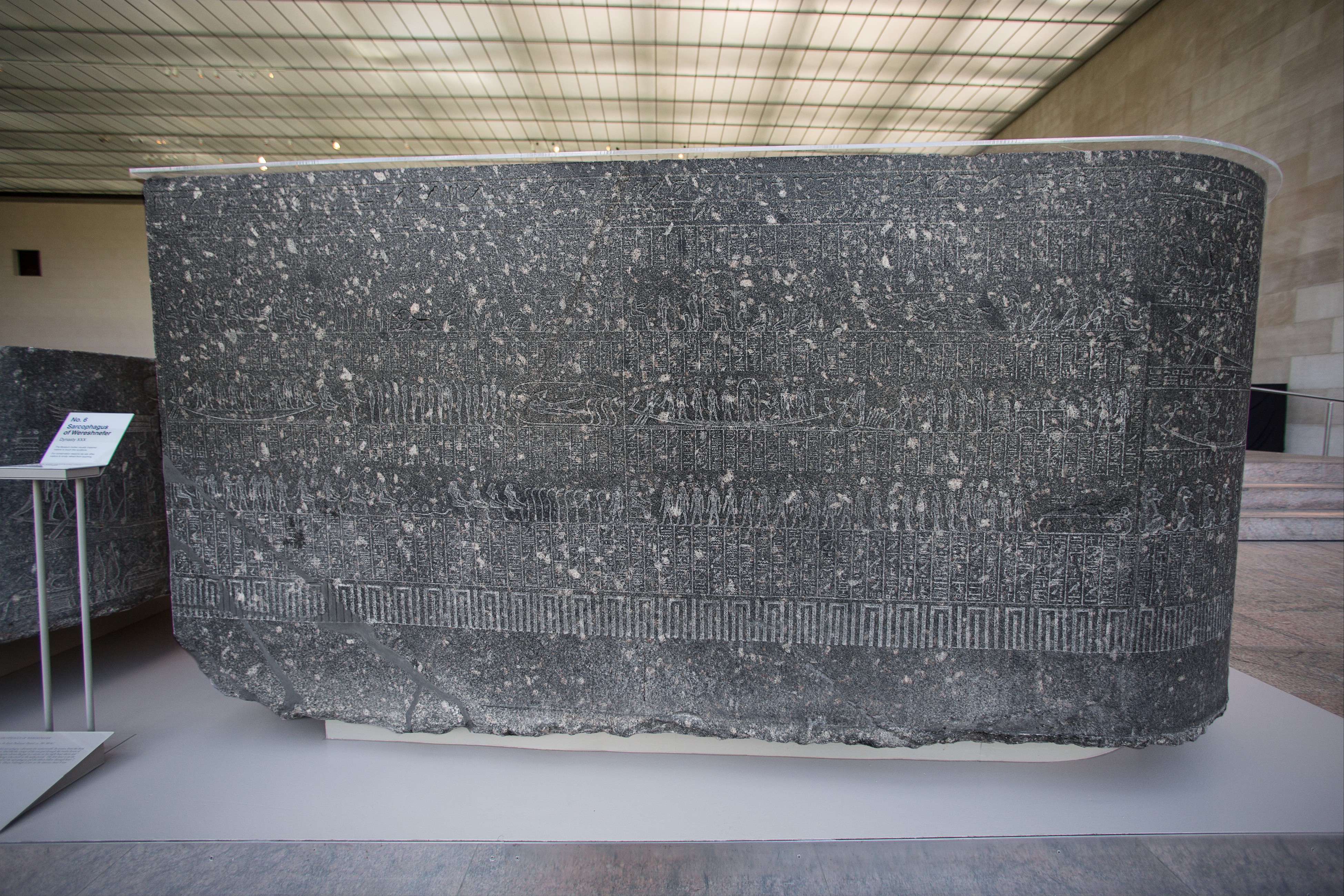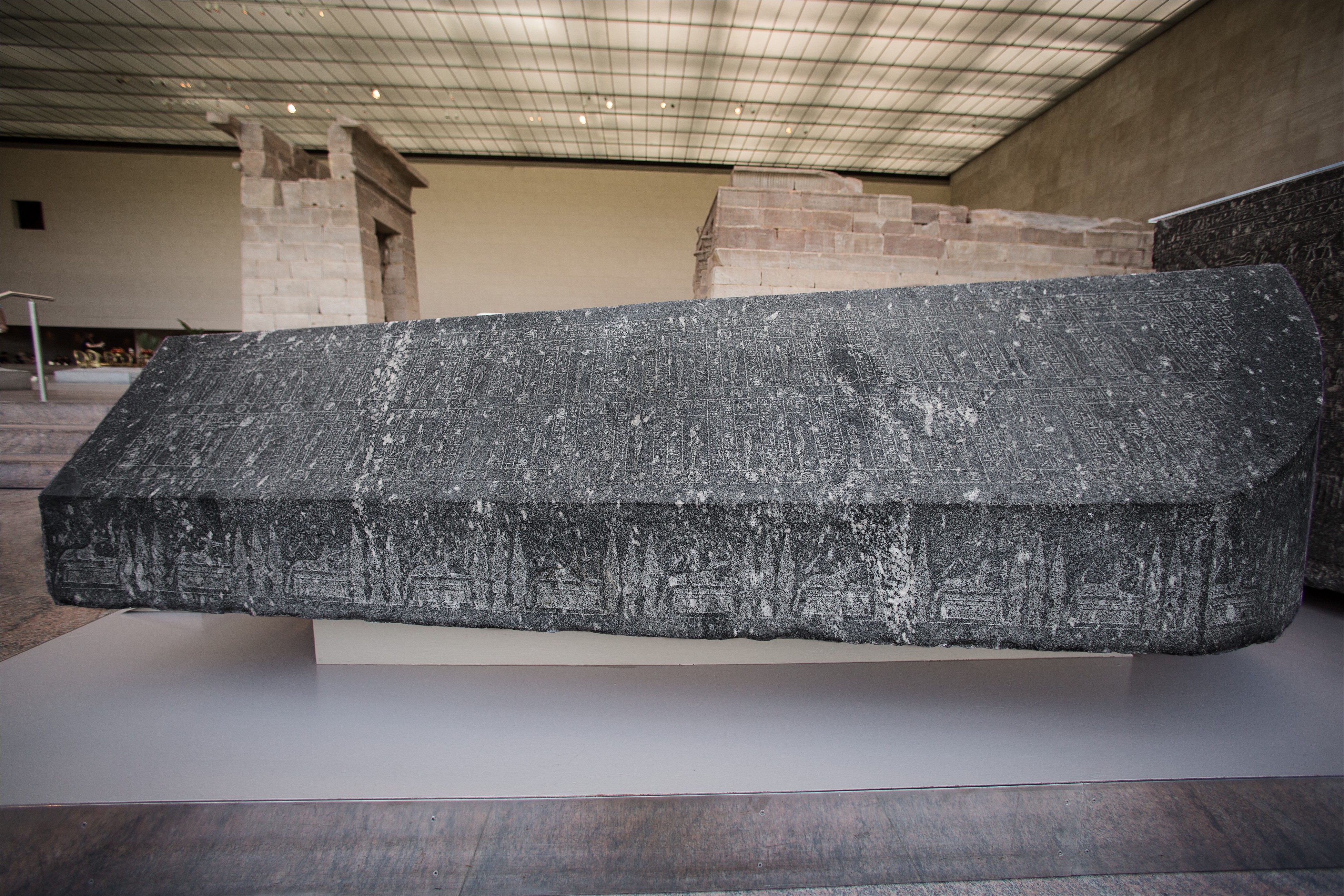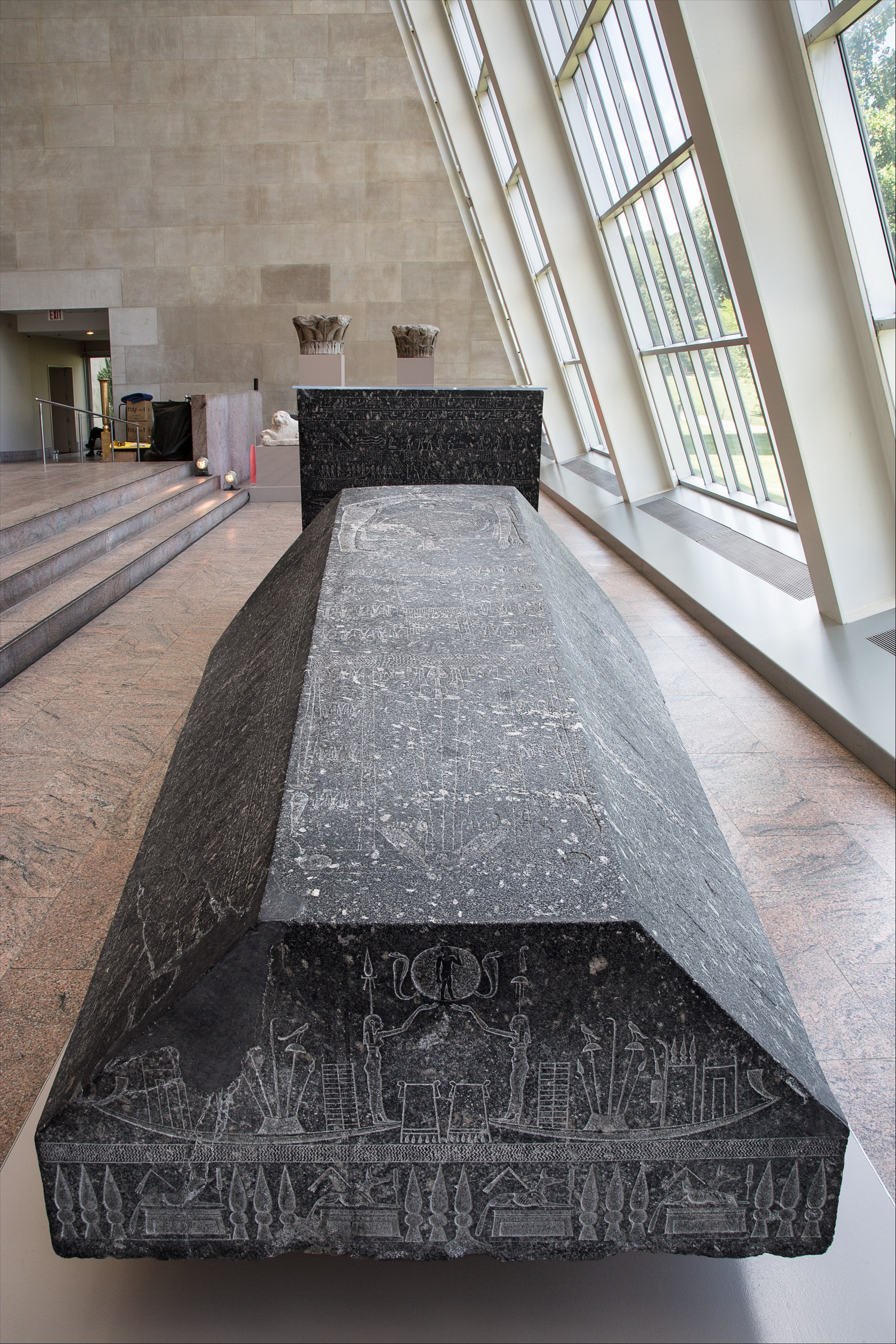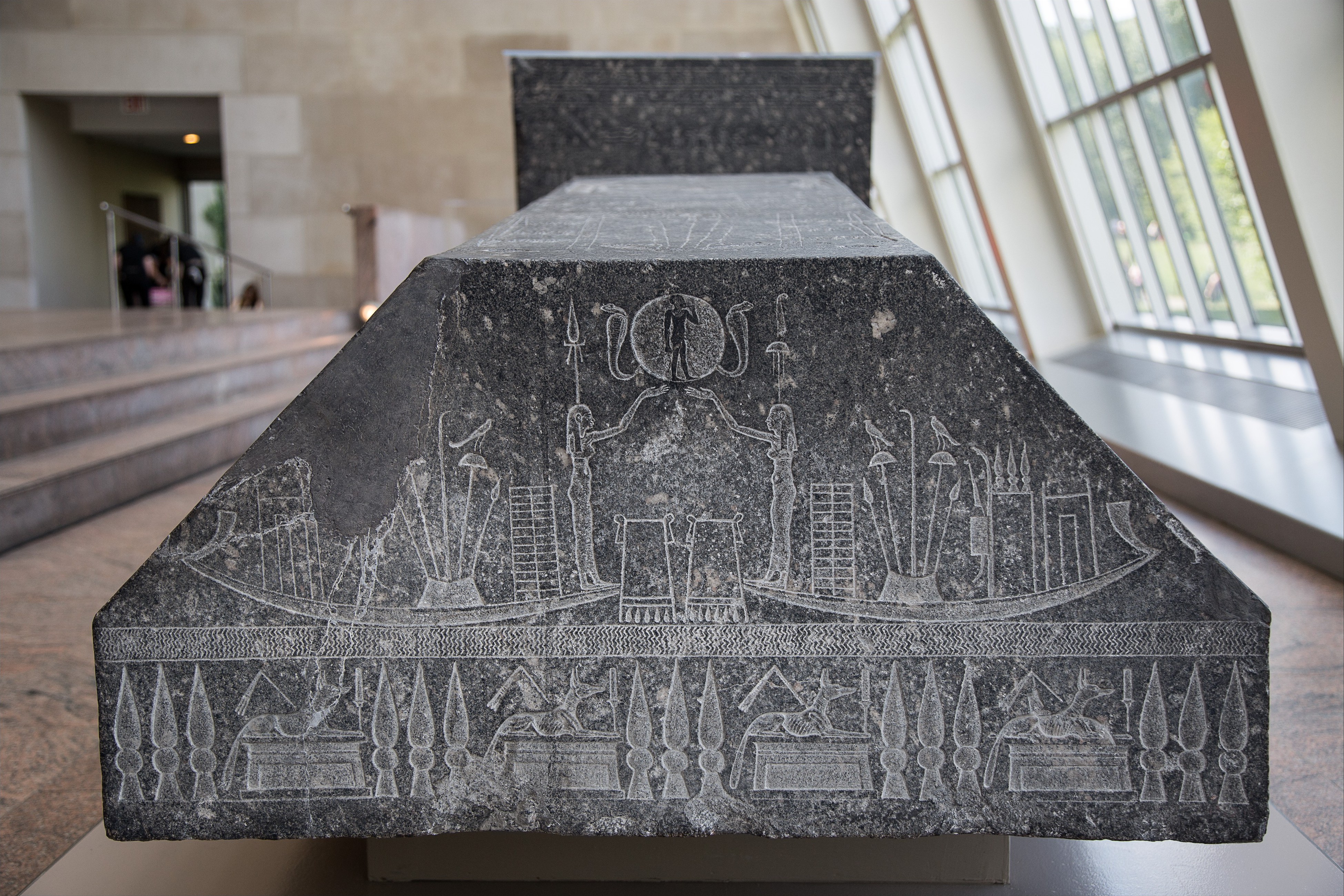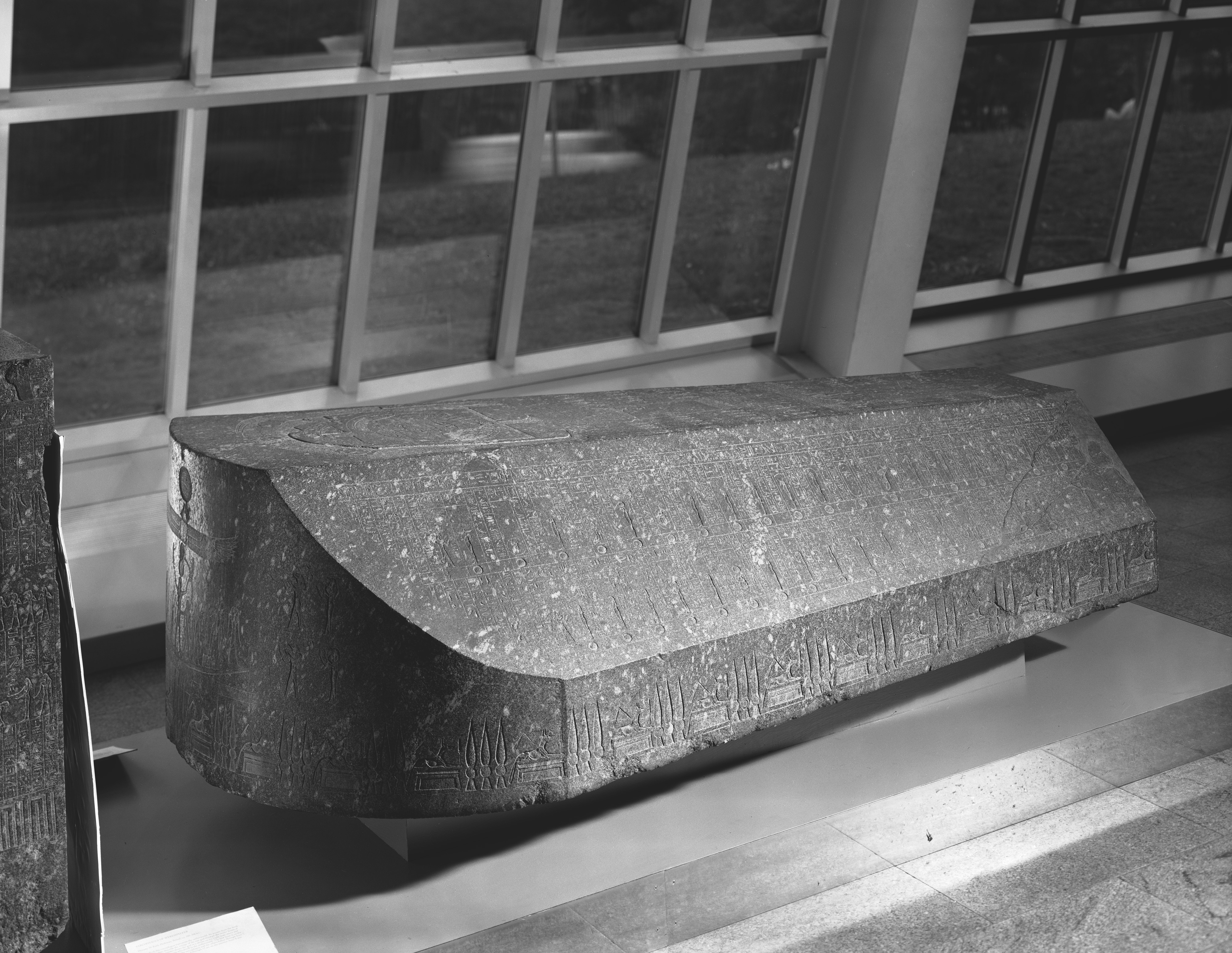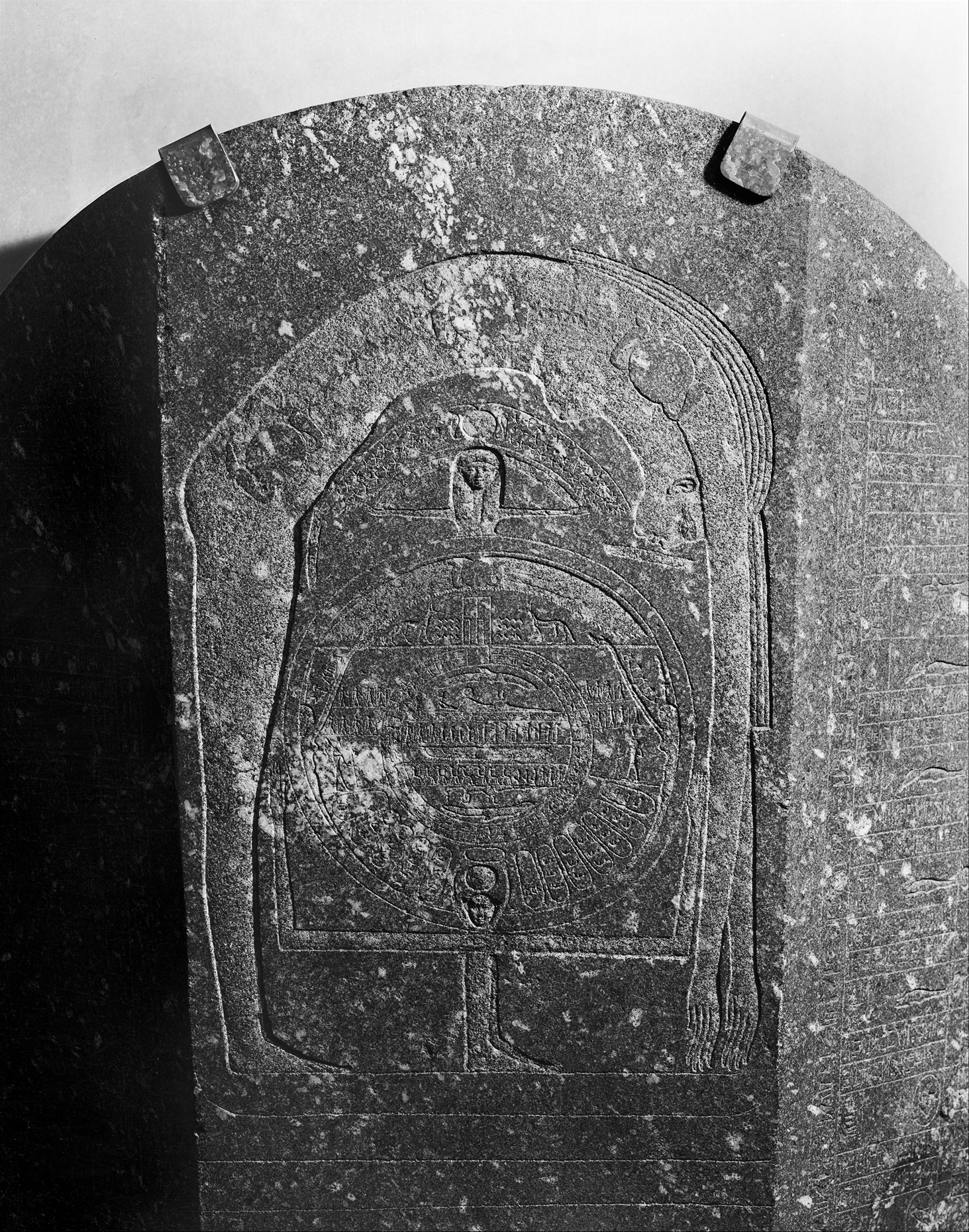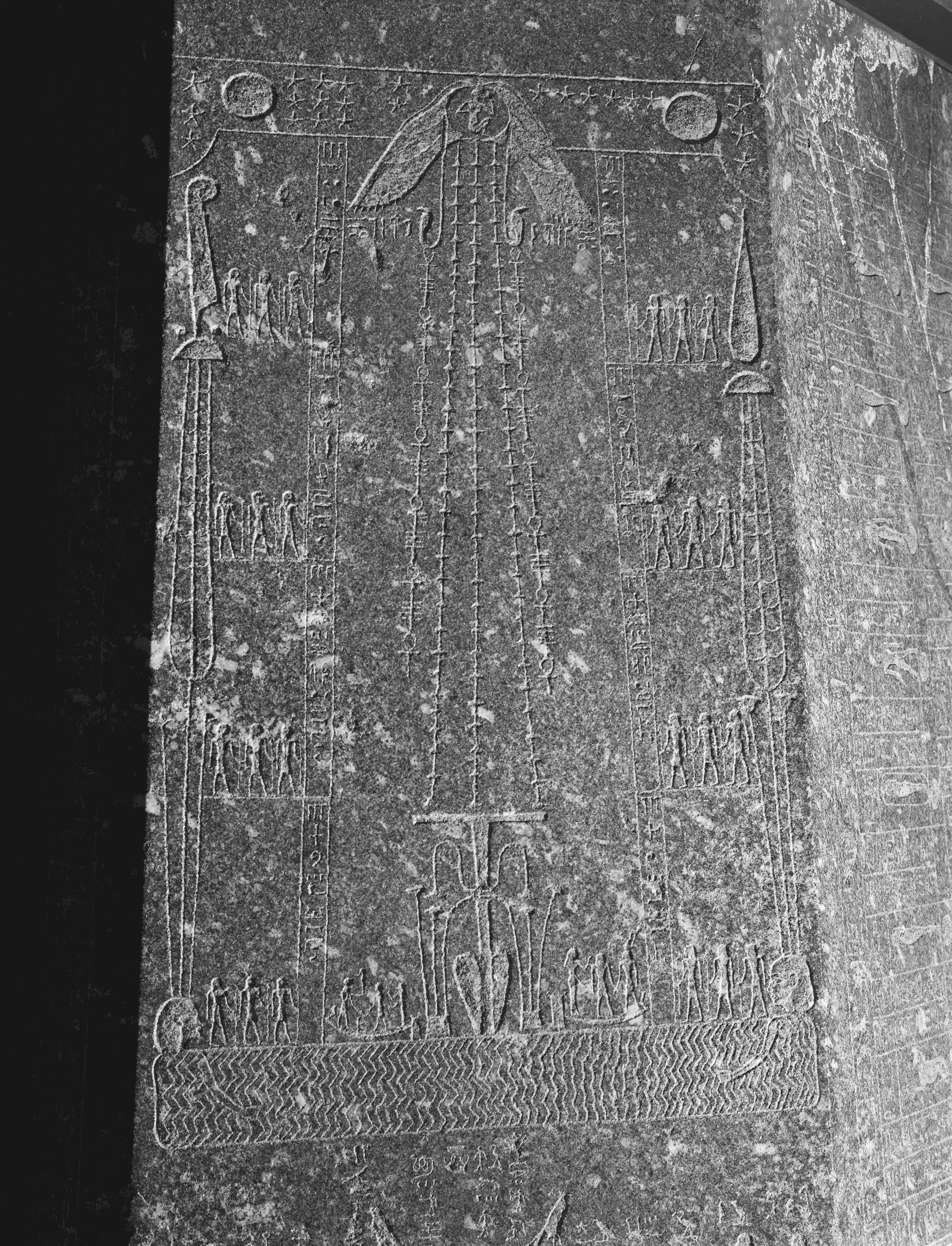Sarcophagus of Wereshnefer
Dynasty 30–early Ptolemaic Period
Wereshnefer was a priest of the goddesses Mut, Nephthys, Sekhmet, Neith, and Satis. Although his offices were in temples from Aswan to Koptos in Upper Egypt, his tomb, from which this unusually large sarcophagus comes, was in the northern Egyptian necropolis of Saqqara. The scenes and texts on the sarcophagus and its lid belong to funerary literature originally composed for royalty more than a thousand years earlier. The body of the sarcophagus is inscribed inside and out with descriptions of the sun's passage through the netherworld at night. Its lid is decorated with scenes and texts relating to the sun's rebirth and journey through the day sky. Together, the sarcophagus and its lid form a powerful metaphor of the journey from death to life that Wereshnefer hoped to achieve each day in company with the sun.
The body of this sarcophagus represents the netherworld. Its scenes, from the book known as Amduat, describe the voyage of the sun god through the twelve hours of night. The middle register shows the god in a shrine on his night boat; above and below are the various beings who dwell in the netherworld. The first hour is on the exterior head (rounded end) of the sarcophagus and the others follow through hour 7, in order, to the right. Hours 9 through 12 are on the interior; hour 8 was omitted.
Depiction of the World from the Sarcophagus of Wereshnefer
This is one of the first known representations of the world as round. It is framed by the body of Nut, goddess of the sky, who is supported by the outstretched arms of Shu, the atmosphere. At her feet lies the earth, represented by the uplifted arms on two legs, a rebus for the name of the earth god Geb. The world is shown in the center of this frame as three concentric circles. The outer-most circle is bordered on the left and right by goddesses representing the east (by Nut's leg) and west; before them stand the gods and peoples of the deserts that border Egypt on the east and west. At the top (south) is a symbolic depiction of the Nile and the caverns that were believed to be its source. The ovals at the bottom (north) represent the islands and shorelands of the Mediterranean Sea. The second ring represents Egypt itself. It contains the emblems of Egypt's forty-two nomes, or states, arranged from south (top) to north and east to west, reflecting the actual geographical divisions of the country. The innermost circle shows both the night and day skies (the former with stars) and is meant to be viewed at ninety degrees to the outer rings.
Lid of the Sarcophagus of Wereshnefer
The lid of this sarcophagus represents the day sky. At its foot, the boat that carries the sun through the night meets the day boat; between them rises the newborn sun.
The scene on the head (rounded end) shows the day boat floating on the waters of the sky, with the sun elevated by the god Shu (the atmosphere). To either side are four pairs of male (frog-headed) and female (snake-headed) deities representing the four qualities of the primeval waters; inert, infinite, negative, and inaccessible.
The sides are inscribed with the Litany of Re, addressed to the seventy-four forms of the sun god. The left side shows Wereshnefer, at the head end, worshiping the first thirty-seven of these forms plus the ancestral kings of Upper Egypt. On the right side Wereshnefer faces the last thirty-seven forms plus the ancestral kings of Lower Egypt.
The top of the lid has two scenes. The foot end and center depict the sun's rays resurrecting the mummy of Osiris, lying in its shrine in the depths of the netherworld, just as Wereshnefer hoped they would revive his body lying in the sarcophagus. At the head end, oriented in the opposite direction, the goddess Nut (the day sky) bends over a depiction of the world.
Due to rights restrictions, this image cannot be enlarged, viewed at full screen, or downloaded.
This artwork is meant to be viewed from right to left. Scroll left to view more.
